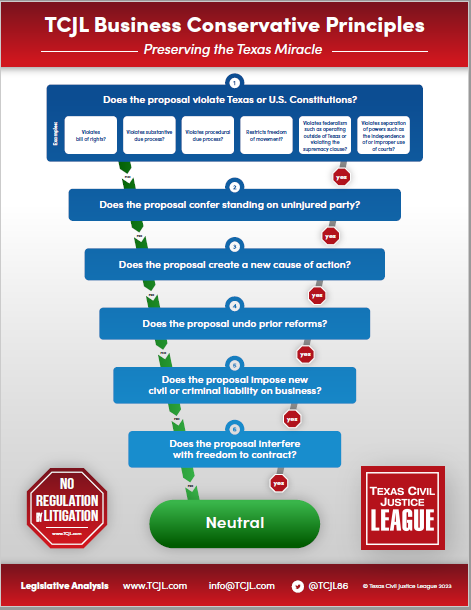 The Texas Supreme Court has affirmed a Houston [14th] Court of Appeals decision reversing summary judgment in favor of Houston attorney George Fleming and his law firm in a lawsuit filed by 4,000 former clients who signed up with the firm to assert claims in a mass action against Wyeth, the manufacturer of the diet drug fen-phen. The case now returns to the trial court for further proceedings.
The Texas Supreme Court has affirmed a Houston [14th] Court of Appeals decision reversing summary judgment in favor of Houston attorney George Fleming and his law firm in a lawsuit filed by 4,000 former clients who signed up with the firm to assert claims in a mass action against Wyeth, the manufacturer of the diet drug fen-phen. The case now returns to the trial court for further proceedings.
George Fleming and Fleming & Associates, L.L.P. v. Rebecca Wilson, et al. (No. 22-0166, May 17, 2024) arose from the national class action brought by 4,000 former clients of trial attorney George Fleming against Fleming for breach of fiduciary duty. Prior to suing Wyeth in 2001 Fleming spent about $20 million to medically screen more than 40,000 potential claimants. He ended up with about 8,000 clients, and subsequently settled the case for $339 million. The problem arose when Fleming reimbursed himself for all of his screening costs before distributing proceeds to his clients, rather than reimbursing only the costs associated with the clients’ screening. One group of clients sued Fleming in federal court under the Class Action Fairness Act. Fleming successfully argued that those claims were too dissimilar to be tried in a class action, and the trial court dismissed the action for want of jurisdiction. Another group of claimants sued in state court. In a bellwether trial involving 10 of those claimants, the jury rendered a verdict against Fleming. The rest of the 4,000 claimants, the Wilson plaintiffs, moved for summary judgment based on collateral estoppel. Fleming again argued that the claims of the bellwether claimants were “nowhere near identical” to the Wilson claims, and he pointed to the federal court’s class action certification decision as proof. The trial court subsequently denied the Wilson plaintiffs’ summary judgment motion.
Years later Fleming moved to set the Wilson cases for trial. In another bellwether trial, this one called the “Harpst trial,” the jury found for Fleming. He took that finding and asserted that the rest of the claims should be dismissed because “the Harpst trial resolved the common issues against each of the approximately 4,000 remaining plaintiffs.” The trial court granted summary judgment for Fleming. The court of appeals reversed initially on the basis that the trial court’s judgment in the “Harpst trial” had not been “authenticated” and could not be used against the Wilson plaintiffs. SCOTX, in a per curiam opinion, reversed that ruling and remanded for consideration of the merits of Fleming’s collateral-estoppel defense. On remand, the court of appeals again reversed on the basis that Fleming was not entitled to defensive collaterial estoppel “because there was no ‘privity’ between the six Harpst plaintiffs and the larger group of Wilson plaintiffs.” Fleming sought review, which SCOTX granted.
In an opinion by Justice Young, SCOTX affirmed the court of appeals but on different grounds. In response to Fleming’s claim of collateral estoppel, the Court noted that to prevail Fleming had “to show that further proceedings would entail ‘the relitigation of identical issues of facts or law that were actually litigated and essential to the judgment in the prior suit” (citation omitted). Fleming urged the Court to adopt § 40 of the Restatement (Second) of Judgments, which would result in dismissal of the Wilson plaintiffs’ claims because they “impliedly agreed to be bound by the Harpst judgment, thus justifying application of nonparty preclusion and allowing us to reinstate the summary-judgment order favoring Fleming.” The Court, however, left this argument for another day. Instead, it focused on Fleming’s inconsistent arguments in federal court, where he emphasized that the court couldn’t certify a class action because his former clients’ claims were too disparate in their factual and legal issues. This brought the Court to consideration of the doctrine of judicial estoppel.
As the Court pointed out, “[a]t its most general level, ‘[j]udicial estoppel is a common law doctrine that prevents a party from assuming inconsistent positions in litigation’” (citations omitted). The “primary goal” of the doctrine “is not to benefit the adverse party, although it will have that consequence. Judicial estoppel instead aims to protect the integrity of the judicial system itself.” That integrity, the Court went on, is undermined if a prevailing party persuades a court to accept a particular position in prior litigation and then turns around an makes a contradictory argument in separate litigation to seek an “unfair advantage.” This creates the appearance that the latter court had been led astray by the contradictory argument, which must be both intentional and produce “a benefit by making a clear and unambiguous statement that convinced a prior court to adopt a position that contradicts the party’s current position.”
SCOTX concluded that Fleming crossed that bridge in this case. He knew that his winning argument in the federal court, where he represented that all the claims were distinct, flatly contradicted his winning argument in the state court, where he said they were all the same. By making the argument in federal court, he avoided not only class certification, but federal jurisdiction altogether. Unable to get out of state court using the same strategy, he changed his tune. The case now returns to the trial court, so we’ll see what arrows Fleming has left in the quiver. It should at any rate be noted that this and its related litigation commenced in 2008. At 16 years and counting, the Wilson plaintiffs are still looking for justice.












